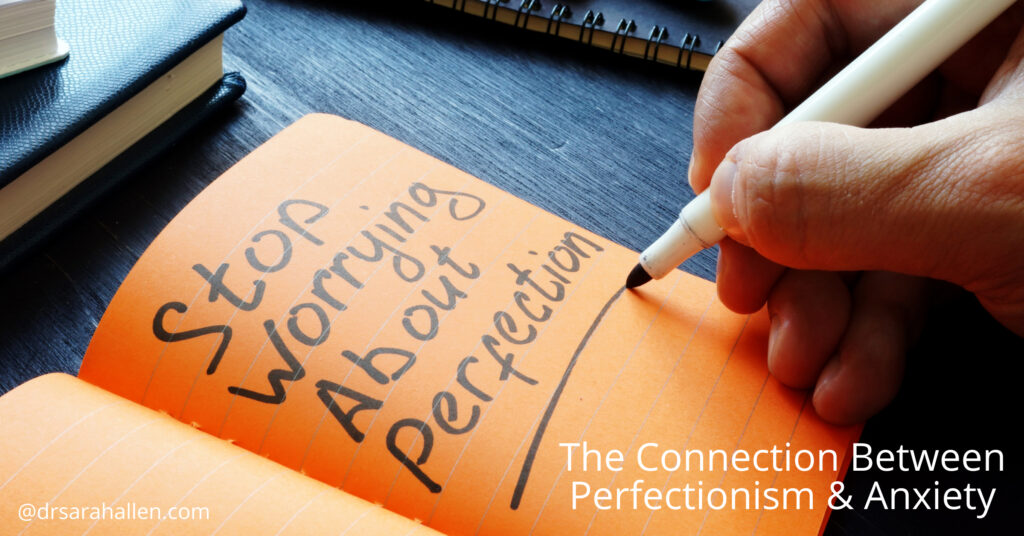
Why Do We Worry?
Worrying is not a pleasant thing to do. Worries bother us. We can’t sleep or concentrate because of pessimistic thoughts are going round and around in our head. So why do we do it? In a way, worries make sense as they pull us in to a false sense of feeling in control. We are doing something, even if it is just worrying!
I think people continue to worry because the mind thinks:
- Maybe I’ll find a solution.
- I don’t want to overlook anything.
- If I keep thinking a little longer, maybe I’ll figure it out.
- I don’t want to be surprised. If I consider all the possible outcomes, I’ll be more in control when something bad happens.
Recent research has looked at how brain chemicals affect your emotions and how your genes may give you at a predisposition to getting anxiety. We often see that worrying runs in the family. I think, and many mental health practitioners agree, that it is a mix of DNA, your environment and the current stressors you are experiencing, as well as brain chemistry that affect whether you get it or not. Anyone can develop anxiety too and at any age.
When I talk with my clients and ask them about their first memory of experiencing feeling anxious, they often trace it back to late childhood or teenage years. Others link it to major life events such as going off to college or becoming a parent for the first time.
The important thing to remember is that you can learn tools to reduce worrying! In this article I am going to discuss three proven tips for overcoming worry. Firstly, the difference between active (useful) and useless worrying and why it is important to distinguish them, how writing out your thoughts can help you gain a more helpful perspective and lastly, how to stop fear from holding you back from achieving what you want in life.
Tip 1. Harnessing Worry: The Power of Active vs. Useless Worry
Worry is a natural human response to uncertainty. However, not all worries are created equal. In fact, there’s a significant difference between active worrying and useless worrying. Understanding these differences can be the first step towards managing anxiety and reclaiming your peace of mind.
What is Active Worrying?
A Tool for Problem-Solving
Active worrying is productive. It’s the type of worry that prompts you to take action and solve problems. When you’re engaged in active worrying, you’re essentially using your concern as fuel for finding solutions. For example, if you’re worried about a deadline at work, you might use that anxiety to create a detailed plan to ensure you meet it on time.
Characteristics of Active Worrying:
- Goal-Oriented: It leads to actionable steps.
- Time-Limited: It subsides once a solution is found.
- Constructive: It focuses on finding resolutions.
- Empowering: It gives you a sense of control over the situation.
Example: Imagine you’re anxious about an upcoming presentation. Active worrying would involve researching thoroughly, practicing your speech, and perhaps even seeking feedback from a trusted colleague. This type of worry helps you feel prepared and confident.
What is Useless Worrying?
A Drain on Your Mental Energy
Useless worrying, on the other hand, is unproductive. It’s the type of worry that loops endlessly in your mind without leading to any constructive action. This form of worry often focuses on hypothetical scenarios or things that are beyond your control. For instance, worrying incessantly about a natural disaster that may never happen doesn’t help you prepare; it only drains your energy and heightens your anxiety.
Characteristics of Useless Worrying:
- Circular Thinking: It goes around in circles without reaching a conclusion.
- Perpetual: It can continue indefinitely, creating a constant state of anxiety.
- Destructive: It undermines your mental and emotional well-being.
- Disempowering: It leaves you feeling helpless and overwhelmed.
Example: Consider being worried about the economy collapsing. Unless you’re in a position to influence economic policies, this worry doesn’t lead to any actionable steps. Instead, it keeps you stuck in a state of anxiety, sapping your mental energy and preventing you from enjoying life.
How to Transform Useless Worry into Active Worry
1. Identify the Type of Worry
The first step is recognizing whether your worry is active or useless. Ask yourself:
- Is there a specific problem I can solve?
- Can I take any action right now to address this worry?
- Am I focusing on hypothetical scenarios or real issues?
- Is this something I frequently worry about but nothing bad actually happens?
2. Reframe Your Thoughts
If you identify your worry as useless, try to reframe it. Shift your focus from what you can’t control to what you can. For example, instead of worrying about a potential layoff, focus on updating your resume and networking. This puts you in a proactive mindset.
3. Set Boundaries
Limit the time and energy you give to worrying. Set specific times of the day to acknowledge your worries, then consciously choose to let them go. It may also help to limit exposure to news or social media that can trigger anxious thoughts.
4. Take Action
If your worry is active, take action towards finding a solution. Break down the problem into smaller, manageable steps and start working on them one by one. Taking action not only helps address the issue but also gives you a sense of control over it.
5. Practice Mindfulness
Mindfulness techniques, such as meditation and deep breathing, can help you stay grounded and prevent your mind from spiraling into useless worry. By staying present, you’re better equipped to handle life’s uncertainties.
6. Seek Support
Sometimes, talking to a trusted friend or therapist can provide a new perspective and help you turn useless worry into active problem-solving. They can offer insights you might have overlooked and provide emotional support.

To learn more about active worrying read: Number 1 Question That Helps Reduce Worrying
Tip 2: Reduce A Worry’s Power
The best way to reduce a worry’s power is by writing it down. Seeing the worry in black and white rather than thoughts bouncing around your head helps give you more perspective about the worry.

Study your worries by keeping a worry diary. Write down what you fear might happen (be as specific as possible) and then later write down if what you were worried about actually happened, whether it was as bad as you expected, and what you did to cope with the situation.
- Set aside some time during the day to worry— your “worry time”. Select a time every day that is convenient for you and pick a suitable amount of time to worry (half an hour, one hour). Use this time to think about your worries and about possible resolutions. It can be helpful to write things down. It will take time to train yourself not to dwell on worries at other times of the day or night.
- Practice is key here. What you can do if you worry outside of the set aside time is to write the worry down and put it in a “worry box” (you can use an empty tissue box for this or write the worry in a list you keep on your smart phone). Then, when it’s your official worry time, you can look at your worries and deal with them appropriately.
- Keep a pen and a pad of paper for worries that come to you at night. Night worries can go round and around in our head as it seems so important at the time to remember them. This can cause adrenaline levels to start rising in your body which of course, keeps you awake and your thoughts racing more. Writing the worry down and then distracting yourself (read using a book light or do a relaxation techniques) calms you physically and mentally, allowing you to get to sleep.

To learn more about Worry Journals read: Discover How a Worry Journal Can Help Reduce Your Anxiety
Tip 3: Don’t Let Fear Hold You Back.
Have you ever felt that something you are worrying about stops you from moving forward even though you know deep down that change is necessary? If so, you’re not alone. Fear can be a powerful force that holds us back but fear doesn’t have to be a roadblock. You can break it down and overcome it, one small step at a time.
Jenny’s Story
Let’s take the example of Jenny (not her real name). She had been in her current job for eight years, feeling bored and unfulfilled, with no opportunities for promotion. Although she knew the best thing to do was to change jobs, she was plagued by worry that finding another job would be too difficult. The thought of interviewing terrified her, and she was concerned that other employers wouldn’t be interested in hiring her.
Using a baby-steps technique, Jenny started to evaluate her fears and current skill set. On a scale of 1 to 10 (with 1 being not worried at all and 10 being overwhelmingly worried), she rated her fear of getting a new job as a 9/10. In contrast, she rated her confidence in her current skills as a 1/10.
To tackle her fear, Jenny broke down the process of getting a new job into smaller, manageable steps. This is known as a hierarchy of worries, where tasks are ordered by increasing levels of worry. Here’s what Jenny’s hierarchy looked like:
Jenny’s Hierarchy of Worries
- Research what good resumes look like (2/10)
- Go online and search for jobs in her job market (2/10)
- Write her new basic resume based on current skills (3/10)
- Self-evaluate whether she needs to learn new skills (4/10)
- Tweak resume for actual positions advertised (4/10)
- Take on new projects at work or talk to her boss about learning new skills (7/10)
- Find out if there is an opportunity to move to a different department within her company (7/10)
- Apply for a job (8/10)
- Role-play a mock interview/telephone interview (8/10)
- Go to the interview (10/10)
At first glance, Jenny’s worry levels for certain steps were quite high. However, by the time she reached the more challenging tasks, her confidence had grown, and her worry intensity had decreased. When she finally got to the stage of applying for a job, the worry intensity was no longer at an 8/10 because she had built up confidence through the earlier steps. Though the actual interview was stressful, she managed it successfully, something she couldn’t have imagined doing at the beginning of the process.
Breaking Down Your Fears
If you find yourself in a situation similar to Jenny’s, where fear is holding you back, consider using the baby steps technique:
- Identify Your Fear: Clearly define what you’re afraid of. Is it public speaking? Changing careers? Moving to a new city?
- Evaluate Your Fear: Rate your fear on a scale from 1 to 10. This will help you understand the intensity of your worry.
- Break It Down: Break the process into smaller, manageable steps. Order these steps by increasing levels of worry.
- Take Action: Start with the least intimidating step. As you accomplish each step, you’ll gain confidence to tackle the next one.
- Build Confidence: Celebrate small victories along the way. Each completed step brings you closer to overcoming your fear.
The Power of Small Steps
Remember, fear doesn’t have to control your life. By breaking it down into small, manageable steps, you can challenge your worries and take action towards your goals. It’s okay to feel fear—what’s important is how you respond to it.
Jenny’s story is a powerful reminder that we all have the strength to overcome our fears, no matter how daunting they may seem. By focusing on one step at a time, you can build the confidence needed to tackle even the most intimidating tasks.
The more you avoid something you are worried about, the bigger and scarier the fear grows!

This process can be applied to any situation! With each baby step your confidence grows so you are not jumping from a 2/10 step to an 8/10 step, you are progressing from a 2/10 to a 3/10 etc.. This makes each progressing step much more manageable and much less scary.
The only way to decrease worry about making mistakes is to learn that you can cope with making them. Set a time limit for making a decision, write down your reasons for making the decision, and then follow through. Keeping a decision-making diary (similar to the worry diary described above) can help during this process.
It can help to imagine a situation that is worrying you and then imagine yourself being able to cope well in it. Pay attention to how you feel when you successfully cope in a situation.
Worry is an inevitable part of life, but it doesn’t have to control you. By understanding the difference between active and useless worrying, you can harness your worries to become a more effective problem-solver and lead a less anxious life. By writing out your worries you can gain a different perceptive and often see the problem, and solution, more clearly. Lastly, if taking action seem too difficult and overwhelming, break down the steps into small, manageable goals. Remember, it’s all about taking control and transforming your worries into actionable steps.
I hope you have found these proven strategies helpful. If you find yourself struggling with worrying, don’t hesitate to reach out to me for support because it can be hard to make these changes by yourself. Please explore the many articles I have written on my blog about anxiety and worry as well as a free downloadable booklet that goes into more depth about overcoming anxiety and worry. I am here to help you on this journey to a more peaceful and empowered life. Together we can work on turning your worries into strengths.

If you have any questions, or would like to set up an appointment to work with me and learn how to reduce anxiety, please contact me at 847 791-7722 or on the form below.
If you would like to read more about me and my areas of specialty, please visit Dr. Sarah Allen Bio.
Dr. Allen’s professional license only allows her to work with clients who live in IL & FL & the UK and unfortunately does not allow her to give personalized advice via email to people who are not her clients.
Dr. Allen sees clients in person in her Northbrook, IL office or remotely via video or phone.

What Can I Read That Helps Me While I Am Waiting For My First Appointment With Sarah?
Download this free booklet to gain valuable insights and practical strategies for managing anxiety and worrying.




























